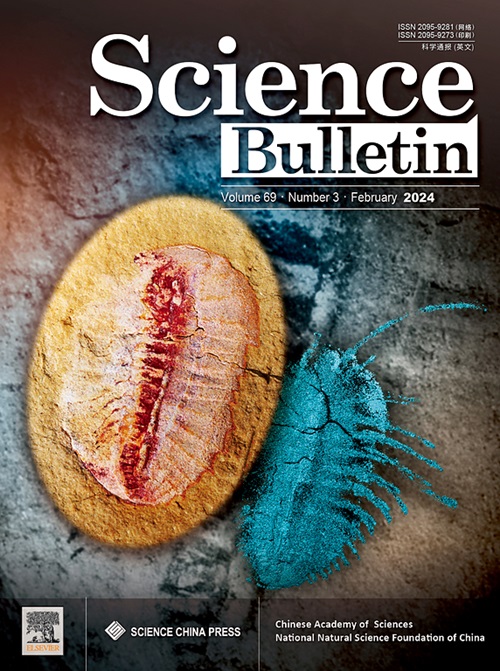Convective injection into stratospheric intrusions alters the tropopause chemical structure
IF 21.1
1区 综合性期刊
Q1 MULTIDISCIPLINARY SCIENCES
引用次数: 0
Abstract
The tropopause chemical structure (TCS) is influenced by stratosphere-troposphere exchange (STE) and plays a role in the Earth’s climate. However, this role is still not fully understood in East Asia, where active STE and high anthropogenic emissions coexist. Using airborne measurements of trace gases, including O3, CO, and H2O, we reveal the variations in TCS during two consecutive cut-off lows (COLs), an important trigger of STE. We demonstrate the important roles of two-way STE and long-range transport processes in delivering natural and anthropogenic signatures in the TCS. The former COL case shows a normal pattern of TCS, consisting of stratospheric and tropospheric air and a mixture of them. The latter, as a novel type of STE, exhibits an anomalous and complex structure due to deep convective injection into stratospheric intrusions and advection of remote marine air. The distinct mixture of stratospheric air and anthropogenic pollution alters the TCS, with horizontal and vertical scales estimated to be 200 and 1 km, respectively. Moreover, air of maritime origin, which is convectively transported and strongly dehydrated during long-range transport, is also identified. Such a complex TCS can produce unique chemical environments that modulate cloud physics and atmospheric radiation. From a climatological perspective, events of these anomalous airmasses are nonnegligible in terms of their frequency and chemical impact, as revealed by multiyear observations. These new insights advance our understanding of the mixing of natural and anthropogenic species that shape the TCS in East Asia and have implications for climate change.

平流层侵入物的对流注入改变了对流层顶的化学结构。
对流层顶化学结构(TCS)受平流层-对流层交换(STE)的影响,在地球气候中起着重要作用。然而,这种作用在东亚仍未完全被理解,在东亚,活跃的STE和高人为排放并存。通过空气中痕量气体(包括O3、CO和H2O)的测量,我们揭示了连续两个截止低压(COLs)期间TCS的变化,COLs是STE的一个重要触发因素。我们展示了在TCS中传递自然和人为特征的双向STE和远程传输过程的重要作用。前一种情况显示正常的TCS模式,由平流层和对流层空气以及它们的混合物组成。后者是一种新的STE类型,由于平流层侵入体的深层对流注入和遥远海洋空气的平流,其结构异常复杂。平流层空气和人为污染的明显混合改变了TCS,其水平和垂直尺度估计分别为200公里和1公里。此外,还确定了对流输送和在远程输送过程中强烈脱水的海源空气。如此复杂的TCS可以产生独特的化学环境,从而调节云物理和大气辐射。从气候学的角度来看,这些异常气团的事件在其频率和化学影响方面是不可忽视的,正如多年的观测所揭示的那样。这些新发现促进了我们对自然和人为物种混合的理解,这些物种形成了东亚的TCS,并对气候变化产生了影响。
本文章由计算机程序翻译,如有差异,请以英文原文为准。
求助全文
约1分钟内获得全文
求助全文
来源期刊

Science Bulletin
MULTIDISCIPLINARY SCIENCES-
CiteScore
24.60
自引率
2.10%
发文量
8092
期刊介绍:
Science Bulletin (Sci. Bull., formerly known as Chinese Science Bulletin) is a multidisciplinary academic journal supervised by the Chinese Academy of Sciences (CAS) and co-sponsored by the CAS and the National Natural Science Foundation of China (NSFC). Sci. Bull. is a semi-monthly international journal publishing high-caliber peer-reviewed research on a broad range of natural sciences and high-tech fields on the basis of its originality, scientific significance and whether it is of general interest. In addition, we are committed to serving the scientific community with immediate, authoritative news and valuable insights into upcoming trends around the globe.
 求助内容:
求助内容: 应助结果提醒方式:
应助结果提醒方式:


